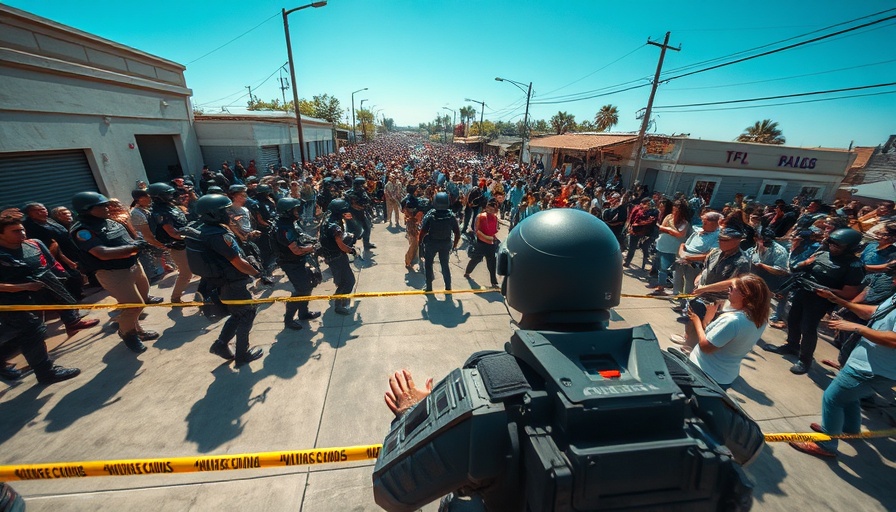
Federal Agents' Clashes with Protesters: A Snapshot of Southern California's Immigration Enforcement
In a significant event that unfolded on July 10, 2025, federal agents clashed with protesters during an Immigration and Customs Enforcement (ICE) raid at a marijuana facility in Camarillo, Southern California. This incident marked one of two large-scale immigration raids carried out by federal authorities in the region on that Thursday.
The Context: Why the ICE Raids?
The raids are part of ongoing enforcement measures by the Department of Homeland Security (DHS), targeting criminal elements related to immigration violations. This particular operation focused on a marijuana facility, highlighting the intersection of immigration and drug law enforcement. As marijuana remains a contentious issue across the United States—legalized in some states and still illegal federally—operations like these stir significant debate in local communities about the priorities of law enforcement and the protection of workers’ rights.
Clashes Erupt as Protests Intensify
On the ground, activist groups responded swiftly to the raid, positioning themselves outside the facility, advocating for the rights of workers. Eyewitness accounts described intense scenes as federal agents accused of using crowd control measures to disperse protesters. Some reports indicated the deployment of irritants, a tactic often used in unauthorized gathering situations to maintain order. The frustration boiled over when federal agents and protesters clashed, resulting in the detention of at least one person.
Community Response: Voices from the Ground
California Governor Gavin Newsom's office issued a statement regarding the clashes, emphasizing government respect for individuals' rights during enforcement operations. Newsom's remarks reflect the sentiments of many community members who argue that immigration enforcement should be approached with sensitivity, balancing law enforcement objectives with humanitarian concerns.
The Bigger Picture: Trends in Immigration Enforcement
This incident sheds light on broader trends within immigration enforcement and community relations in the United States. In recent years, significant national attention has been given to immigration policy, often polarized between calls for more stringent enforcement and demands for reformative measures that prioritize the welfare of vulnerable populations.
In many cases, these raids not only draw media attention but also galvanize community mobilization around immigrant rights, leading to growing activism that challenges the status quo. The clash in Camarillo is emblematic of the tensions brewing in many parts of the country, where community members are increasingly willing to confront federal policies directly.
Future Predictions: Possible Outcomes of Increased Activism
As public awareness and discontent surrounding immigration policy grow, it’s likely that we will see increased instances of community-led protests against ICE operations in various locations. Experts predict that these confrontational events may lead to changes in enforcement tactics, a reshuffling of priorities, or even new legislative initiatives aimed at reforming immigration law.
Community activists argue that sustained protests can pressure lawmakers to reconsider their approaches to immigration and labor rights, potentially leading to policy shifts that prioritize humane treatment over punitive measures.
Take Action: Understanding Your Rights
For residents, understanding your rights during such operations is crucial. Advocacy groups often provide resources for individuals facing immigration issues. Those engaged in protest actions should be aware of local laws pertaining to assembly, civil rights, and how to safely navigate interactions with law enforcement.
This incident in Camarillo serves as a potent reminder that community engagement and advocacy can influence the course of local and national policy, embodied by a populace that feels empowered to voice their concerns.
As Americans reflect on these issues, it becomes increasingly vital that discussions surrounding immigration incorporate multiple perspectives, recognizing both the need for law and the lived experiences of those affected.
 Add Row
Add Row  Add
Add 




 Add Row
Add Row  Add
Add 

Write A Comment